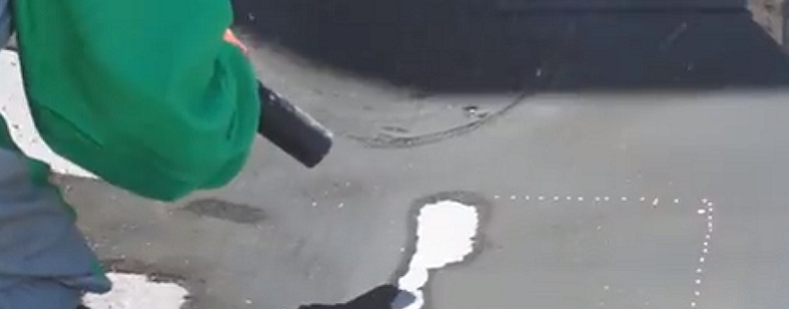Typically applied thick, polyurea and rubber coatings are notoriously hard to remove. Regular abrasive blasting methods are rarely effective in removing these coatings. Abrasives like garnet and coal slag bounce off these surfaces causing them to heat and become gum-like with little removal. This burned residue should not be coated over and would normally require further surface preparation. To avoid these issues, specifiers, contractors and facility owners have three options for polyurea and rubber coating removal.
Not all offer the same quality of surface preparation. Two of the three methods require multiple steps prior to recoating.
- Mechanical Removal (Grinding, Cutting, and Chipping)
Mechanical removal of polyurea and rubber coatings off surfaces is common and often specified. This is because of the ineffectiveness regular abrasive blasting has on removing these coatings. Hand held power tools will rip or cut the thick flexible coatings off but do not leave the substrate ready to be recoated. Profiling via abrasive blasting must still be done to the surface to allow the new coating to adhere well. This two-step process is time consuming, both because of the limited speed of hand tooling and time required to set-up, abrasive blast (profile the substrate) and clean-up. - Ultra High Pressure Water Blasting
A second option for removing rubberized and polyurea coatings is Ultra High Pressure (or UHP) Water Blasting. UHP Blasting uses extremely high water pressure to cut the coating away and expose the surface underneath. UHP has its benefits, but also has its disadvantages. Water blasting of all kinds can come with costly containment, water treatment and disposal issues. Ultra High Pressure Water Blasting alone does not create a profile, so coating applicators become reliant on the surface profile previously created. Many modern-day coatings require different profiles from past coating types and as a result, the existing profile likely won’t match the new coating specification. Additionally, rust inhibitors must be added; otherwise the bare, freshly cleaned substrate will begin to flash rust. - Sponge-Jet Blasting
The third option for effective removal of polyurea and rubberized coatings is Sponge Media™ composite abrasives. Like ordinary dry abrasive blasting, Sponge Media is propelled to the surface using pressurized air. This composite abrasive includes the one of many abrasive types/grits and a sponge matrix, which allows for the removal of polyurea and rubber coatings quickly and with little dust generation. Sponge (Media) Blasting does not melt or burn these flexible coatings and also profiles the surface in the one step. Coating thickness can impact removal time, but coatings of more than 12,5 mm (1/2 inch) have been removed successfully with Silver 30 Sponge Media.
The broad and growing use of rubberized and polyurea coatings on corrosive, high-impact and high-wear applications, combined with the significant cost of reapplying these coatings, suggests that applicators need to get surface preparation right the first time.








